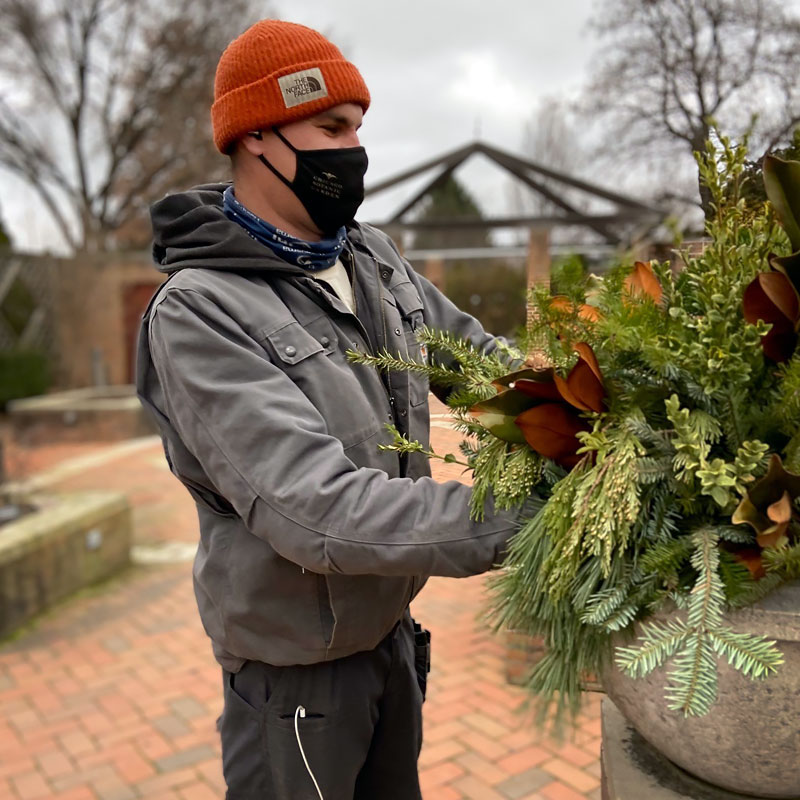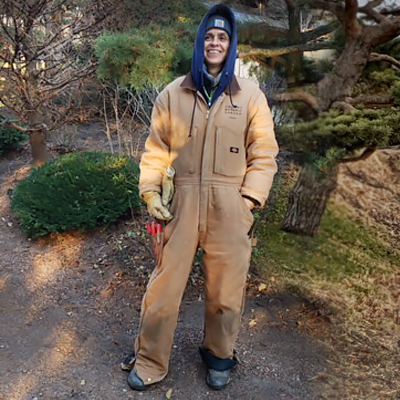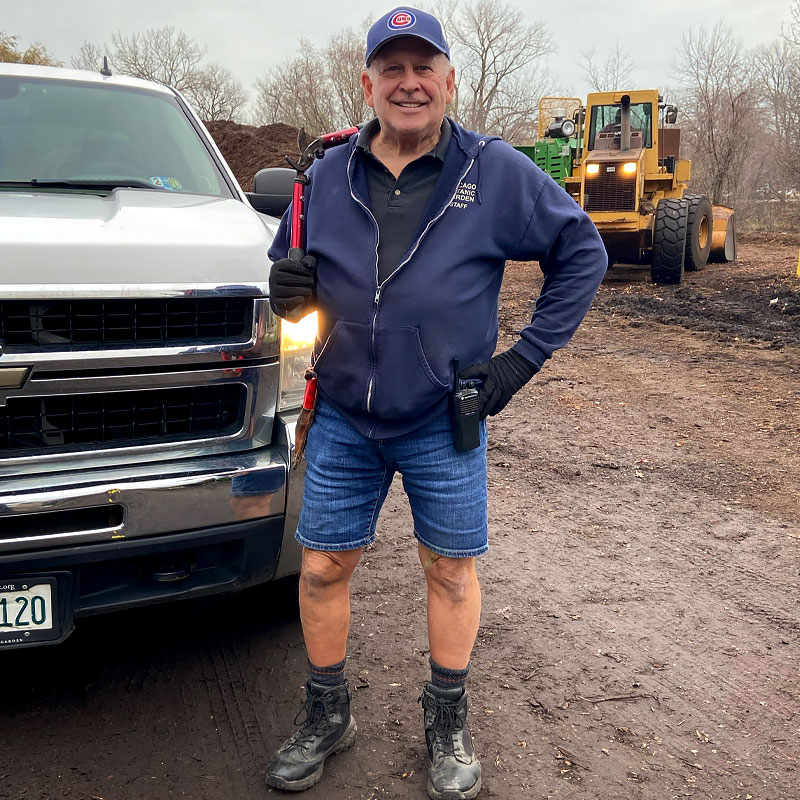

How-to
Garden Stories
Baby, it’s Cold Outside!
Many years ago, I took a college class called “The Natural Environment in Winter.” It was January, and we met outdoors for about three hours—regardless of the temperature. I showed up at the first class wearing jeans, a medium-heavy jacket, a sweat shirt, gym shoes, cotton socks, and gloves, but no hat or scarf. (Hey, I was a city kid.) The ink in my pen froze and I couldn’t take notes. We spent a lot of time standing still to observe birds, twigs, moss, ice crystals, and seed heads while the wind sent bone-chilling blasts through my clothes. It was so cold that it was hard to concentrate on what the instructor was saying. The very next day, I bought insulated boots, long underwear, wool socks, and anything else that would help keep me warm.
If only I’d had the wisdom of Garden staff members who spend a lot of time working outdoors. They know how to dress for the weather. It’s all about wearing layers and staying dry.
David Murray, horticulturist
His typical winter gear includes a base layer of thermal underwear and a few mid-weight layers of mixed natural fiber (like wool) or synthetic clothing for warmth. “I pull a Garden hoodie over that layer.” On top of that, he wears an insulated jacket, unless the temperature dips below 15 degrees Fahrenheit. “At that point, I generally pull on the [Garden's] coveralls.” (They’re insulated.)

Heather Sherwood, senior horticulturist
“When it’s just around freezing, I wear leggings and [insulated] jeans.” She’ll pull on a tank top and place two long-sleeved tops over it. “One is thermal and tight—the other is a Garden work shirt. Next, my work hoodie and my [insulated] jacket are the outer layer.” (I’m feeling toasty already.)

Ayse Pogue, senior horticulturist
Covering the neck is a no-brainer. “Scarves are a must. I also cover whatever hat I’m wearing with a hood to completely block the back of my neck,” she said. “I use a lot of gloves with varying levels of warmth,” she said. “The warmest ones are lined mittens. I used to wear hunting gloves for super cold days.”

Tim Johnson, director of horticulture
“Gardeners should look at the outdoor recreation industry for their clothing,” Johnson said. “Anything designed to work well for the outdoor sports person should work well for the gardener.” He’s not kidding. He likes to hit the ski slopes via helicopter. (Which sounds terrifying to a novice skier like me.) The helicopter drops him and other skiers on a steep mountainside in British Columbia, and they are on their own for hours. “It’s super fun,” said Johnson, who has skied for 27 years. “You’re in the back country skiing all day long.” He dresses depending on the level of activity. “I’m big on layering so you can adjust. It’s much better to have multiple layers than one thick coat.”

Dave Cantwell, assistant horticulturist
Dave Cantwell is the outlier. “There’s that kid in high school who wears shorts in all weather,” he said. “I’m that kid.” He adds more layers depending on the temperature. “In the winter when it gets pretty cold and I’m doing pruning, I’ll slip into the coveralls. I always wear gloves and always have warm, dry feet so I’m wearing my regular summer work boots. They’re waterproof on the bottom but the canvas tops breathe, and I always wear thick socks in summer and winter.” He also likes his Army Surplus rubber boots. “They have an air bladder inside an extra insulating layer. I’ll wear a double pair of socks inside my boots.” He also wears stretchy bicycling gloves inside his insulated work gloves.

So, Come On, Get Out!
Winter is a wonderland even if there’s no snow. Cure that cabin fever while enjoying the crisp cold air and bright sunshine. “We all have different tolerances for cold,” Johnson said. “I have regular leather gloves for when it’s moderately cold. And, I have an old pair of ski gloves that I adapted for gardening. I fixed the tears using duct tape. When you get to a certain age, you don’t care what you look like. I’d rather be warm and comfortable than cold and stylish.”
Stay Dry
“I like to waterproof my boots and coveralls, either with a paste or spray,” Murray said. It’s key to staying warm. There’s nothing worse than cold wet fabric against skin. Sherwood changes her socks and gloves frequently. Waterproof boots up to her knee protect her legs. "I have found that when I work hard, like for snow removal, I sweat a lot, and if I stop, I get cold quickly. A little perspiration can make you chilled and a change of clothes is best.”
Apply Sunscreen
“You still get a lot of [UV] exposure and I use sunscreen when I’m skiing even if it’s cloudy,” Johnson said. “Drink a lot of water, too. I think hydration is an issue in the winter as well. Drink before you’re thirsty.”
Cover Your Noggin
A bare head allows for a certain amount of heat loss. Sherwood wears a thin wool, moisture-wicking hat. When the temps are in the teens, she dons a fleece-lined wool hat.
Protect Your Extremities
Pogue wears heavy duty snow boots that keep her feet warm and dry, but they are bulky. “I have another pair that’s lighter for not-so-frigid days.”
Do Some Winter Pruning
Johnson’s winter garden gear includes layers that come and go. “In late fall, I’ll have long underwear, a work shirt, and another shirt, and I’ll peel the coat off when it gets too warm.” He avoids cotton because once the fabric gets wet, it holds moisture against the skin.
Take a Break with Some Hot Cocoa
“I don’t get a cold from being cold,” Cantwell said. “My dad was an Army guy. He’d say when you come in, strip down to your bottom layer so you acclimate right away indoors. If you leave your winter clothes on, you’ll acclimate to the indoor temps, and when you go back outside, you won’t be able to get warm. The only time I caught pneumonia was in August.
The Garden is open every day of the year.
Why notplan your visitnow?

